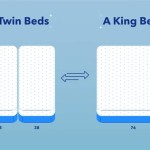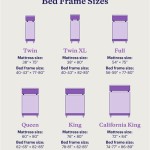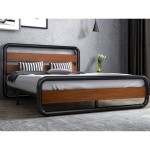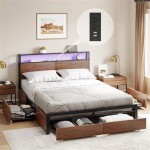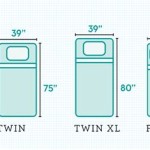Understanding Ford F-150 XLT Bed Sizes
The Ford F-150 has consistently been a top-selling truck in North America for decades. The F-150 XLT trim offers a balance of affordability and desirable features making it a popular choice among truck buyers. Crucial to selecting the right F-150 XLT is understanding the available bed sizes, as the bed's capacity directly impacts the truck's utility and suitability for various tasks.
This article provides a comprehensive overview of the different bed lengths offered with the Ford F-150 XLT, including their dimensions, cargo capacities, and the configurations they are typically paired with. It will also delve into factors that influence the choice of bed size, such as intended use, cab configuration, and overall vehicle maneuverability.
Available Bed Lengths for the Ford F-150 XLT
The Ford F-150 XLT typically comes with three bed length options: a 5.5-foot bed, a 6.5-foot bed, and an 8-foot bed. The availability of each bed length is contingent upon the cab configuration chosen for the truck. Understanding the specific dimensions and associated cab configurations is critical for making an informed purchasing decision.
5.5-Foot Bed: This is the shortest bed option available. It is often referred to as the "short bed". Its interior bed length is approximately 67.1 inches. This bed length is generally paired with the SuperCrew cab configuration, offering ample passenger space while maintaining some cargo-carrying capability. The 5.5-foot bed is a suitable option for buyers who prioritize passenger comfort and interior space but still require the utility of a truck bed for occasional hauling of smaller items or recreational equipment. The 5.5 foot bed offers a balance of practicality, and is suited for suburban environments where parking and maneuverability might be limited.
6.5-Foot Bed: This is the mid-length bed option. Its interior bed length is approximately 78.9 inches. The 6.5-foot bed offers a compromise between cargo capacity and overall vehicle length. It is typically available with the SuperCrew cab and the SuperCab (extended cab) configurations. This bed length is popular because it provides a significant increase in cargo-carrying capacity compared to the 5.5-foot bed without making the truck overly long or difficult to maneuver. This is a useful choice for a construction contractor that needs to haul lumber or other building materials on a more frequent basis.
8-Foot Bed: This is the longest bed option and is generally referred to as the "long bed". Its interior bed length is approximately 97.6 inches. The 8-foot bed offers the maximum cargo capacity for the F-150 XLT. It is primarily paired with the Regular Cab (standard cab) and the SuperCab configurations. This bed length is ideal for individuals or businesses that frequently haul large or bulky items, such as construction materials, landscaping supplies, or recreational equipment like ATVs or motorcycles. However, it's important to note that the 8-foot bed makes the truck considerably longer, which can impact maneuverability, particularly in urban environments or tight parking spaces.
It's important to reiterate than not all bed lengths are available with all cab configurations. Ford configures the F-150 XLT so that longer cabs, like the SuperCrew, aren't paired with the longest bed to keep the overall vehicle length manageable. Conversely, the Regular Cab is usually available with the 8-foot bed to maximize cargo-carrying potential. The SuperCab falls in the middle, offering flexibility with either the 6.5-foot or 8-foot bed depending on the specific model year and options package.
Factors Influencing Bed Size Choice
Selecting the right bed size for a Ford F-150 XLT involves considering several key factors. The most important factor is the intended use of the truck. Other factors to consider are the cab configuration selected, the overall vehicle size, and the trade-off between cargo capacity and maneuverability.
Intended Use: The primary use of the truck should play a significant role in determining the appropriate bed size. If the truck will primarily be used for commuting and occasional light hauling, the 5.5-foot bed with the SuperCrew cab might be sufficient. This configuration provides comfortable seating for passengers while still offering some cargo-carrying capability. If the truck will be used for more demanding tasks, such as construction work or landscaping, the 6.5-foot or 8-foot bed might be necessary to accommodate larger loads of materials. Similarly, if the truck will be used for recreational purposes, such as hauling ATVs or motorcycles, the longer bed lengths will provide more secure and convenient transport.
Cab Configuration: The cab configuration directly impacts the available bed length options. The Regular Cab is typically paired with the 8-foot bed to maximize cargo capacity, while the SuperCrew cab is often paired with the 5.5-foot or 6.5-foot bed to prioritize passenger space. The SuperCab offers a balance between cab space and bed length, allowing for either the 6.5-foot or 8-foot bed, depending on the specific requirements of the buyer. Matching the cab configuration to the intended use is critical for optimizing both passenger comfort and cargo-carrying capability.
Vehicle Size and Maneuverability: The overall length of the truck is directly affected by the bed size. A longer bed will increase the truck's overall length, which can impact maneuverability, particularly in urban environments or tight parking spaces. Drivers should carefully consider the trade-off between cargo capacity and maneuverability when selecting a bed size. If the truck will primarily be used in areas with limited space, the shorter bed lengths might be preferable. However, if cargo capacity is the primary concern, the longer bed lengths might be necessary, even if they compromise maneuverability to some extent.
Furthermore, the turning radius of the truck will be impacted by the overall length of the vehicle. A longer wheelbase, which results from the longer bed options, will result in a wider turning radius. This is an important consideration for drivers who live in areas with narrow streets or who frequently navigate tight parking lots.
Measuring and Understanding Bed Dimensions
Understanding how bed dimensions are measured is crucial for accurately assessing the cargo capacity of each bed length. Interior bed length, width, and depth are all important measurements to consider. Additionally, understanding the location and dimensions of the wheel wells within the bed is necessary for planning cargo loading and securing.
Interior Bed Length: The interior bed length is measured from the inside of the front of the bed to the inside of the tailgate when the tailgate is closed. This is the most important measurement to consider when assessing the cargo capacity of the bed. As previously mentioned, the 5.5-foot bed has an interior bed length of approximately 67.1 inches, the 6.5-foot bed has an interior bed length of approximately 78.9 inches, and the 8-foot bed has an interior bed length of approximately 97.6 inches.
Bed Width: The bed width is measured from the inside of one side of the bed to the inside of the other side of the bed. The bed width is generally consistent across all bed lengths for a given model year of the F-150 XLT. However, it is important to verify the exact dimensions for the specific model year and configuration.
Bed Depth: The bed depth is measured from the floor of the bed to the top of the bed rails. The bed depth is also generally consistent across all bed lengths for a given model year of the F-150 XLT. However, similar to bed width, it is important to verify the exact dimensions for the specific model year and configuration.
Wheel Well Placement: The location and dimensions of the wheel wells within the bed can impact the usable cargo space. The wheel wells protrude into the bed, reducing the width of the bed in certain areas. It is important to consider the location and dimensions of the wheel wells when planning cargo loading and securing, particularly when hauling wide or bulky items. Accurate measurements are important to ensure that cargo will fit between the wheel wells.
Furthermore, the placement of tie-down points within the bed should be considered. Tie-down points are essential for securing cargo and preventing it from shifting during transport. The location and number of tie-down points can vary depending on the bed length and model year. Buyers should ensure that the bed has an adequate number of tie-down points in convenient locations for securing their specific cargo requirements.
Selecting the appropriate bed size for a Ford F-150 XLT requires careful consideration of the intended use of the truck, the available cab configurations, the overall vehicle size, and the bed dimensions. By carefully evaluating these factors, buyers can choose the bed size that best meets their needs and maximizes the utility of their truck. The Ford F-150 XLT is a versatile truck that can meet a wide variety of needs, but selecting the correct bed size is essential for optimizing its performance and functionality.

2024 Ford F 150 Bed Size Cab Options Badger Truck Auto Group

Ford F150 Truck Bed Dimensions

Ford F 150 Bed Size Dimensions Jim Hudson

2024 Ford F 150 And Raptor Bak Revolver X2 Tonneau Cover

2024 Ford F 150 Bed Sizes Of Lafayette

Rvni Roll Up Truck Bed Tonneau Cover For 2024 2025 Ford F 150 F150 5 Feet Waterproof Wal Com

2024 Ford F 150 Bed Sizes Dimensions And Cab Options

2024 Ford F 150 Bed Size Sam Leman

Ford Maverick Vs Ranger F 150 Which Truck Is Right For You Bed Comparison

Ford F 150 Regular Cab 8 Ft Bed Xl Vector Drawing


